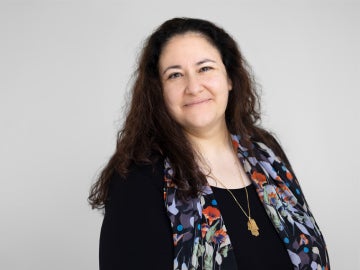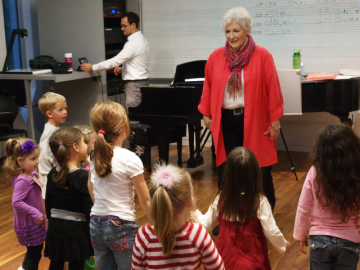Senior Symposium 2015 Preview, Part 1
April 20, 2015
Communications Staff
The Office of the Dean of Arts and Sciences and the Office of the Dean of Studies invite all members of the campus and community to celebrate the academic and artistic endeavors of members of the Class of 2015 at the sixth annual Senior Symposium on Friday, April 24, 2015.
The symposium begins at 1 p.m. in Craig Lecture Hall with opening remarks from Tim Elgren, dean of the College of Arts and Sciences. Concurrent panels begin at 1:30 p.m., 2:45 p.m., and 4 p.m., and a reception in the Science Center Academic Commons will begin at 5 p.m.
This year, 70 seniors and fifth-years on 21 panels—the largest group to date—will each give a 12-minute presentation regarding work they performed for honors or capstones or research they conducted individually or with a faculty mentor.
To get a sense of the rich variety of topics covered at this year’s symposium, the Source is sharing a handful of project abstracts written by presenting seniors in the days leading up to the event. Learn more about the students included in today’s batch by clicking individual photos in the gallery above.
Christine Antonsen, “Selfish Routing on the Deterministic Queuing Model”
Dynamic flow networks can model traffic, optical networks, building evacuations, and more. However, in these situations individual agents using a network want to maximize their own personal welfare, and thus act selfishly. In the field of Algorithmic Game Theory, we study how bad a situation is when everyone acts selfishly compared to an optimal solution to the problem. In my research I focus on selfish routing on the Deterministic Queuing Model. Specifically, I study how minor changes in the model can affect the computability, optimality, and existence of selfish routings.
Christopher Ayoub, “Timekeeping in Roundworm Digestion”
Biological systems are elegant timekeepers that control cycles of varied periodicity. These cycles include timekeepers to regulate period length and executors to enact the rhythmic behavior. Roundworm digestion is a periodic motor program in which three sequential muscle contractions, occurring every ~50 seconds, lead to waste release. I have discovered that the calcineurin gene, tax-6, appears to affect cycle timing. Mutation of tax-6 causes shortened digestion cycles. Others have found this gene to have diverse roles in human physiology (Rusnak and Mertz 2000). I will share my data demonstrating tax-6’s role in biological timekeeping.
Kasey Cheydleur, “This Damsel Isn’t In Distress Anymore: An Analysis of Feminist Retellings of Grimms’ Fairy Tales”
Once upon a time, there was a beautiful young princess...and the patriarchy took advantage of her. In my paper, I explore both the original Grimm’s Fairy Tales as well as modern feminist adaptations in order to see what it is about the Grimm heroines that make their stories worth telling again and again. I also explore feminist retellings aimed at young adults and analyze the different ways audience play into shaping these classic tales for modern times. What moral can the Grimm women teach us today?
Weelic Chong, “Environment Interaction in a Cell Model of Parkinson’s Disease: Alpha-synuclein Modulates Cadmium Transport Dynamics and Homeostasis”
Parkinson’s disease (PD) is a neurodegenerative disorder characterized by aggregation of alpha-synuclein (-syn), whose function is unknown. Indeed, perturbations in both the function of -syn and metal homeostasis have been implicated in PD. Our research aims to uncover and examine gene-environment interactions between -syn and acute metal toxicity. Utilizing an established dopaminergic cell model of PD that expresses human wild-type -syn (N27-syn) or empty vector (N27-vec), I conducted a gene-metal screen to examine -syn’s neuromodulation of metal-induced toxicity. I report that -syn expression increases cadmium-induced neurotoxicity in a concentration-dependent manner. In addition, -syn expression impairs cadmium transport and homeostasis through an oxidative-stress pathway. Our preliminary data elucidates how an environmental risk factor (cadmium) and a native protein implicated in PD (-syn) may synergistically interact to cause neurotoxicity and aggravate PD progression.
Simone Christen, “Rainbows and the Rising Sun”
This research examines how queer rights in Japan has trekked its way through modern history. I use first-person accounts, dated encyclopedia entries, journal articles, and other scholarly writing to demonstrate the unique nature of the queer rights movement in Japan. Focusing specifically on the LGBT population, I seek to show the significant impact the Japanese “gay boom” of the 90’s had on the queer peoples and their lives.
Una Creedon-Carey, “‘The Whole Vexed Question’: Seamus Heaney, Old English, and Language Troubles”
As an Irish poet writing during the 20th century, Seamus Heaney is constantly aware of the politics and problems of operating in the English language. My project locates Heaney in a context of writers and theorists who are similarly interested in the politics of language-ownership and the logistics of communication and expression in a major language. I argue that Heaney’s North presents a unique solution to these common language questions, and that the poet’s focus on etymologies and language history makes his escape into linguistic nonaffiliation more feasible than other, more abstract attempts at a borderless, liberated language.
Caroline de Vries, “German-Persian Connections: Goethe and Hafez in Dialogue in the West-östlicher Divan”
Goethe, inspired by the 14th-century Persian Sufi poet Hafez, wrote his West-östlicher Divan between 1814 and 1819 after reading the 1812 Hammer-Purstall translation of Hafez’s Divan. Goethe's work is a German response to the original Divan, emulating a similar model to Hafez's structure. Goethe draws many parallels between Hafez and himself, and wrote in an announcement of his work that he “may himself be a Muslim.” This paper examines the motifs and interpretations that Goethe includes and questions the significance of this work in a dialogue over time, culture, language, and religion. As both Goethe and Hafez are known for their tremendous influence in the literary traditions of Germany and Iran, this paper invites one to ask what implications can be drawn in the realm of peacemaking between east and west. In light of our modern political climate, this study seeks to build a bridge between the German and Muslim worlds through these two literary pillars of their respective cultures.
Mary (Izzy) Esler, “Climate Change and Displacement: Defining Rights in Rising Tides and Stormy Seas”
Climate change is already a reality, and with it comes the urgent human rights challenge of determining the fate of people who are displaced as a result. This paper seeks to flesh out the concept of “climate refugees” and explore their political options by examining three case studies that demonstrate different dimensions of the problem: refugees of “disappearing” small island states, internal displacement in Bangladesh, and the gray area of “forced migration” in Mexico. This is presented in the context of responsibility and justice for climate change, as those most vulnerable to it are usually those least responsible and from states least capable of adapting.
You may also like…
Remembering Former Visiting Assistant Professor Leila Ben-Nasr
Leila Ben-Nasr, a former visiting assistant professor of comparative American studies, died on November 28, 2025.
Oberlin Community Remembers a Beloved Retired Professor
A member of Oberlin faculty for 13 years, Peggy Bennett was known by students and the Oberlin community for creating and leading MusicPlay, a preschool classroom and learning lab run as part of the...
Eric Rooks Named Director of Campus Safety at Oberlin
Longtime public servant emphasizes collaborative partnerships and kindness.


